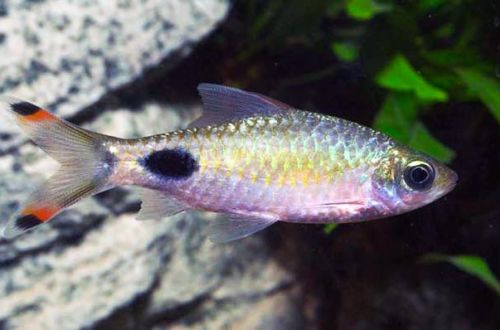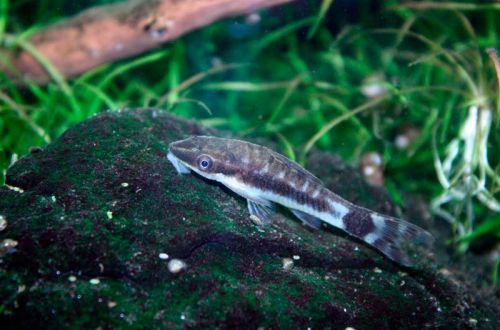
Barbus Maheola
Barbus Maheola, scientific name Puntius mahecola, belongs to the Cyprinidae family. A fish popular in Asia, in particular in India, but practically does not occur in Europe and America. It belongs to simple and unpretentious aquarium species that can get along well with other freshwater fish.

Contents
Habitat
It originates from the territory of India (states of Karnataka, Tamiland, Kerala) from river systems originating in the Western Ghats mountain system and flowing into the Laccadive Sea. It inhabits shallow sections of rivers (up to 2 meters) with a slow current, lagoons and lakes. The natural habitat is characterized by sandy or rocky substrates. Aquatic vegetation is found in limited quantities.
Brief information:
- The volume of the aquarium – from 80 liters.
- Temperature – 18-24°C
- Value pH — 6.0–7.5
- Water hardness – 1–15 dGH
- Substrate type – any
- Lighting – subdued
- Brackish water – no
- Water movement – light or moderate
- The size of the fish is about 7 cm.
- Food – any food
- Temperament – peaceful
- Keeping in a group of 8-10 individuals
Description
Adult individuals reach a length of about 7 cm. Sexual dimorphism is weakly expressed, males are practically indistinguishable from females. The coloration is silvery with large scales, depending on the lighting, green or blue hues may appear. The fins are translucent reddish, the tips of the tail have a red-black pattern. A characteristic feature is also the presence of a large black dot at the base of the caudal fin.
Food
Omnivorous species, in a home aquarium will accept most popular foods of a suitable size (live, frozen, freeze-dried, dry, etc.)
Maintenance and care, arrangement of the aquarium
The optimal size of the aquarium for a small flock of these fish starts from 80 liters. The design is arbitrary, Barbus Maheola is able to adapt even to an empty tank. It is also not demanding on keeping conditions and can adapt to a wide range of hydrochemical values. Aquarium maintenance consists of several standard procedures: weekly replacement of part of the water (30-50% of the volume) with fresh water, regular removal of organic waste (food residue, excrement, etc.), equipment maintenance, control and maintenance of stable pH values, dGH.
Behavior and Compatibility
Peaceful calm fish. Compatible with other non-aggressive species of comparable size. Being in a flock (8–10 individuals) makes the Barbs more mobile, and in the presence of large neighbors they will not become too shy. In addition, it has a positive effect on coloring. The males have their best colors in competition with each other for the attention of the females.
Breeding / breeding
At the time of writing, no reliable information was recorded on the breeding of Barbs Maheola in home aquariums. The lack of information is mainly due to the low prevalence of the species in the aquarium trade outside of India.
Fish diseases
In a balanced aquarium ecosystem with species-specific conditions, diseases rarely occur. Diseases are caused by environmental degradation, contact with sick fish, and injuries. If this could not be avoided, then more about the symptoms and methods of treatment in the section “Diseases of aquarium fish”.





